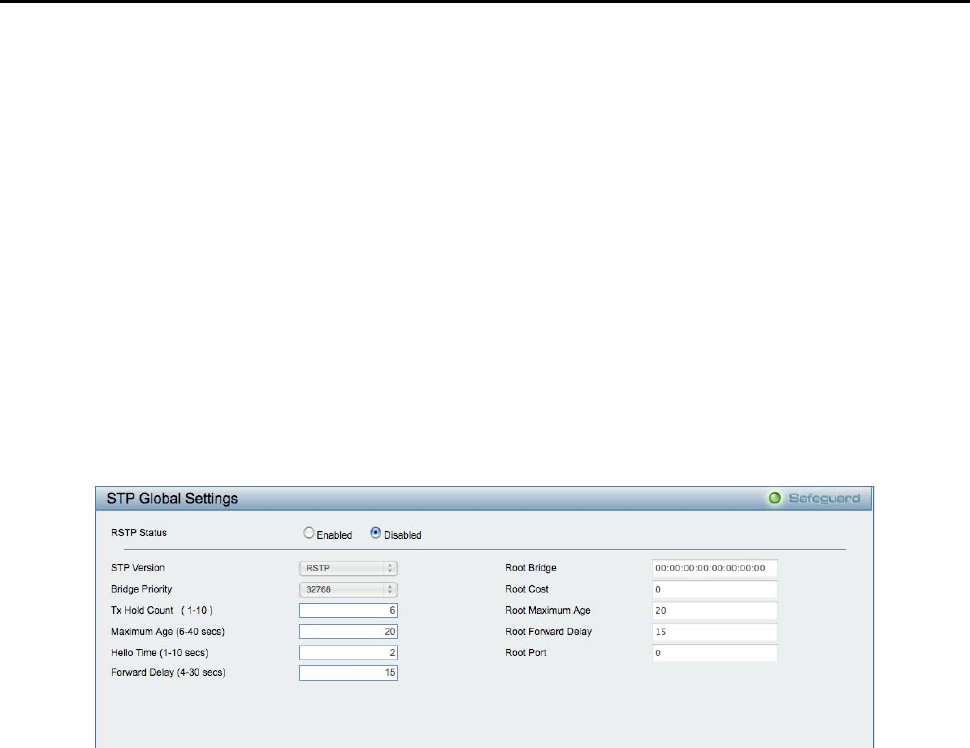
5 Configuration D-Link Web Smart Switch User Manual
RSTP can operate with legacy equipment implementing IEEE 802.1D, however the advantages of using
RSTP will be lost.
The IEEE 802.1w Rapid Spanning Tree Protocol (RSTP) evolved from the 802.1D STP standard. RSTP was
developed in order to overcome some limitations of STP that impede the function of some recent switching
innovations. The basic function and much of the terminology is the same as STP. Most of the settings
configured for STP are also used for RSTP. This section introduces some new Spanning Tree concepts and
illustrates the main differences between the two protocols.
By default, Rapid Spanning Tree is disabled. If enabled, the Switch will listen for BPDU packets and its
accompanying Hello packet. BPDU packets are sent even if a BPDU packet was not received. Therefore,
each link between bridges is sensitive to the status of the link. Ultimately this difference results in faster
detection of failed links, and thus faster topology adjustment.
After enabling STP, setting the STP Global Setting includes the following options:
Figure 82 – Configuration > Spanning Tree > STP Global Settings
STP Version: You can choose RSTP or STP Compatible. The default setting is RSTP.
Bridge Priority: This value between 0 and 61410 specifies the priority for forwarding packets: the lower the
value, the higher the priority. The default is 32768.
TX Hold Count (1-10): Used to set the maximum number of Hello packets transmitted per interval. The
count can be specified from 1 to 10. The default is 6.
Maximum Age (6-40 sec): This value may be set to ensure that old information does not endlessly circulate
through redundant paths in the network, preventing the effective propagation of the new information. Set by
the Root Bridge, this value will aid in determining that the Switch has spanning tree configuration values
consistent with other devices on the bridged LAN. If the value ages out and a BPDU has still not been
received from the Root Bridge, the Switch will start sending its own BPDU to all other switches for permission
to become the Root Bridge. If it turns out that the Switch has the lowest Bridge Identifier, it will become the
Root Bridge. A time interval may be chosen between 6 and 40 seconds. The default value is 20. (Max Age
has to have a value bigger than Hello Time)
Hello Time (1-10 sec): The user may set the time interval between transmissions of configuration messages
by the root device, thus stating that the Switch is still functioning. The default is 2 seconds.
Forward Delay (4-30 sec): This sets the maximum amount of time that the root device will wait before
changing states. The default is 15 seconds.
Root Bridge: Displays the MAC address of the Root Bridge.
Root Maximum Age: Displays the Maximum Age of the Root Bridge.
Root Forward Delay: Displays the Forward Delay of the Root Bridge.
Root port: Displays the root port.
Click Apply for the settings to take effect. Click Refresh to renew the page.
4
4
7
7


















